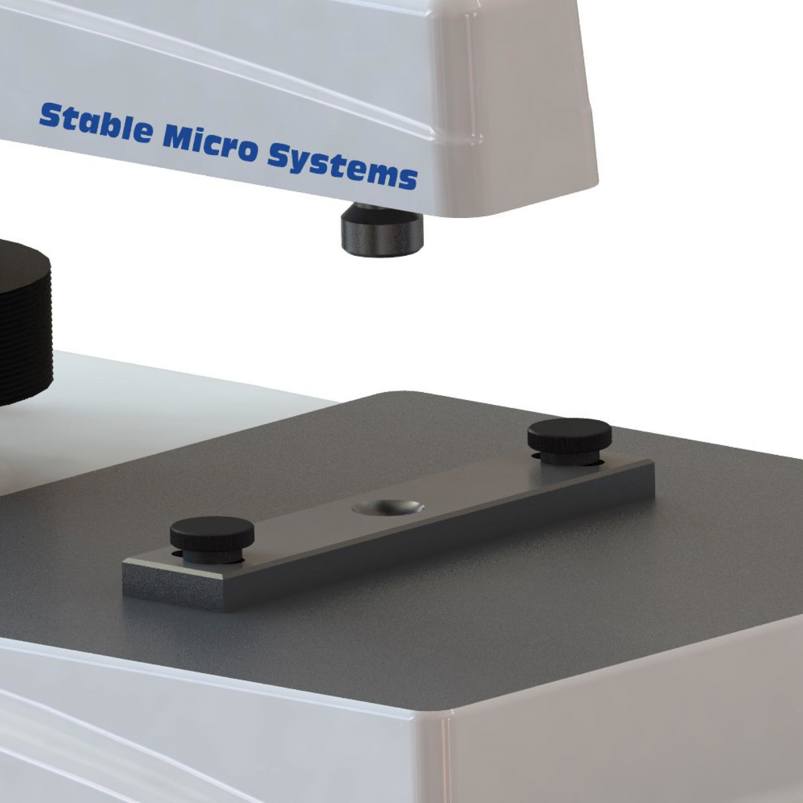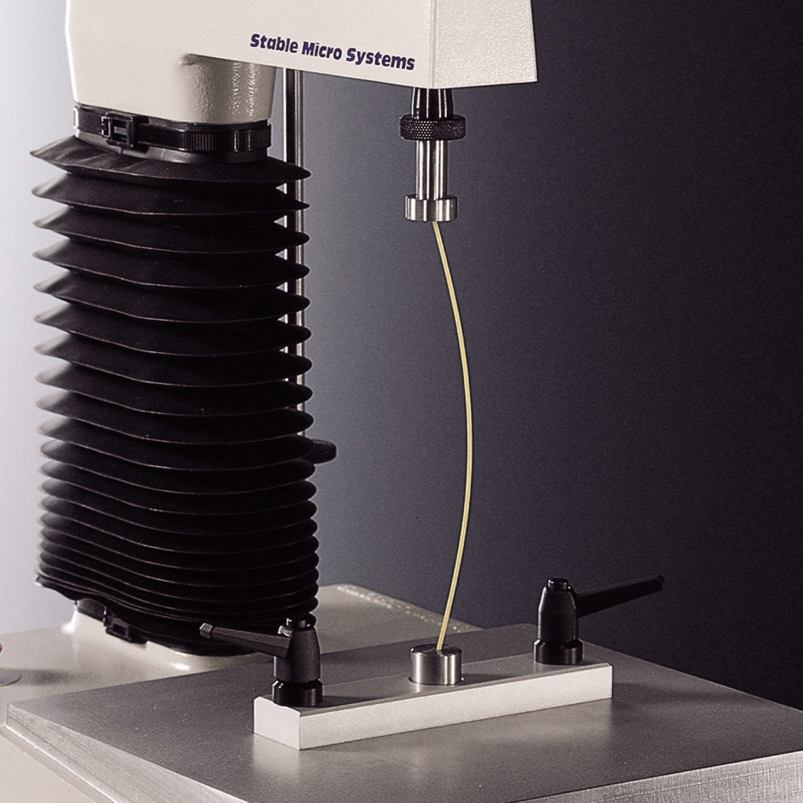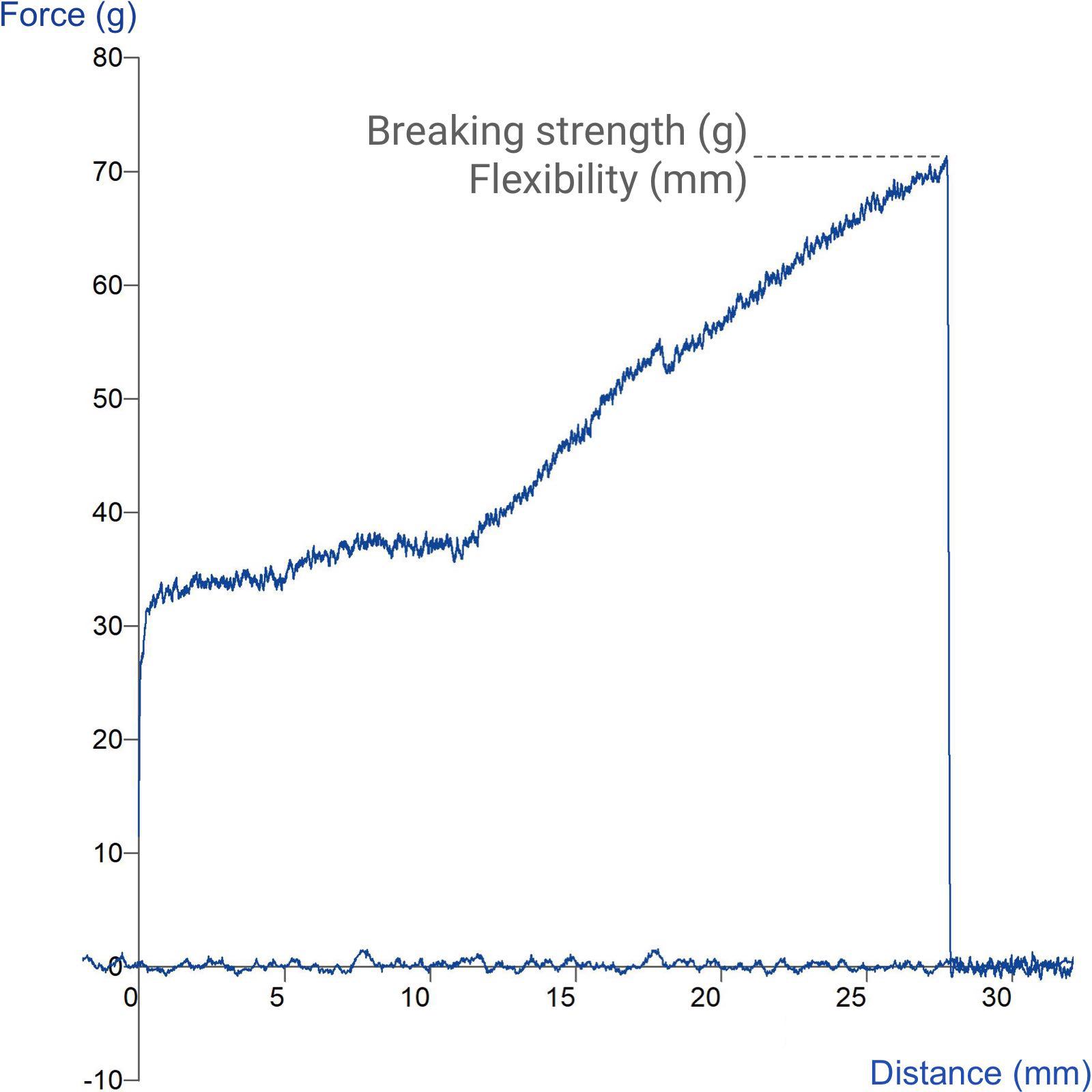Product overview
Drying is the most critical, as well as the most difficult step in pasta production. If pasta is dried too quickly, moisture gradients are created that crack, or check, the pasta. This is considered to be driven by the difference between environmental relative humidity and pasta relative humidity. Checking can occur during the drying cycle, but it can also occur up to several weeks after the pasta leaves the drier. This means that the product can check after it is packaged and sold and subsequently creates a negative customer response. A test for this would therefore be a useful monitoring procedure.
A attachment which can be used to examine strands of pasta for potential checking is the Spaghetti Flexure Rig. Lengths of dry spaghetti are trimmed to a known length and positioned between upper and lower supports in centrally located holes. The upper support is connected to the Load Cell of the Texture Analyser and the lower support to the base of the Texture Analyser. A compression test is performed and the average force and distance to break is measured during which attention is paid to fluctuating force before the final break which would indicate weaknesses within the sample, e.g. checking. These measurements give a good indication of the suitability of the product for packaging and transportation.
This rig measures the compression and flexure characteristics of uncooked spaghetti which is of interest when investigating possible inherent weaknesses due to sprout damage of the durum wheat or incorrect drying procedures.
How does the Spaghetti Flexure Rig work?
Ideal sample form
Rigid thin strands of material which can be flexed to breaking point.
Benefits and limitations
- Provides imitative bending action which occurs with consumer breaking and breakage during transit.
- Single strand testing only.
Technical information
Installation
Full installation instructions are provided within the Education Zone of the latest Exponent/Connect software version and on the technical information sheet accompanying this product.
Chemical compatibility
Stable Micro Systems probes and attachments are commonly made from four materials: anodised aluminium (AA6082 T6), stainless steel (316 T), Delrin (acetyl copolymer) and Perspex (polycarbonate).
In general use, probes and attachments made from these materials will be suitable for testing food products and inert non-food materials.
The four materials listed above are not universally resistant to all types of chemicals and as such the compatibility of the probe/attachment material with the product (to be tested) must be established to prevent damage to the probes and attachments. If the compatibility of the product with the probe is unknown to the customer then the chemical information about the product (Material Safety Data Sheet or Product Data Sheet) should be submitted to Stable Micro Systems. Stable Micro Systems will then assess the suitability of the probe/attachment material for use with the product and advise accordingly. If this advice is not sought then Stable Micro Systems will not accept liability for probes/attachments damaged by chemical attack from the product being tested.
Cleaning and maintenance
All probes and attachments may be cleaned in warm (or hand hot) water using a mild detergent. A soft brush may be used but abrasive cleaning aids should be avoided. Stable Micro Systems products should not be microwaved or cleaned in a dishwasher.
Screw threads should be lightly lubricated after drying using a light lubricant, e.g. petroleum jelly, mineral oil. This will aid the fitting and unscrewing of the item. Each component of a probe or attachment should be wrapped separately when stored, to avoid scratching or chipping. This will safeguard against any unnecessary damage to the accessory.



